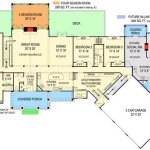Essential Aspects of Low-Cost Housing Plans In Sri Lanka
Sri Lanka faces a growing demand for affordable housing solutions. To address this need, the government has implemented various low-cost housing plans. These plans aim to provide decent and sustainable housing options for low-income families and individuals.
Low-cost housing plans in Sri Lanka adhere to certain essential aspects to ensure their effectiveness and impact.
1. Affordability:
Affordability is the cornerstone of low-cost housing plans. The government sets income limits and eligibility criteria to ensure that target beneficiaries can access these housing units. Housing units are designed and constructed to minimize costs, making them accessible to low-income groups.
2. Quality and Standards:
Despite the focus on cost, low-cost housing projects in Sri Lanka prioritize quality and standards. The government establishes building codes and regulations to ensure that housing units meet minimum standards of safety, durability, and livability. Regular inspections and quality control measures are implemented to ensure compliance with these standards.
3. Location and Accessibility:
The location of low-cost housing units is crucial. These housing projects are often located in close proximity to urban areas, economic hubs, and public transportation, providing residents with easy access to essential services, employment opportunities, and amenities.
4. Participatory Approach:
Sri Lanka's low-cost housing plans encourage beneficiary participation. The government involves low-income households and communities in the planning and implementation stages. This participatory approach ensures that housing units are designed according to the needs, preferences, and socio-cultural context of the target beneficiaries.
5. Sustainability:
Sustainability is an integral aspect of low-cost housing in Sri Lanka. These housing projects are designed to be environmentally friendly and resource-efficient. The use of sustainable building materials, energy-saving appliances, and water conservation measures is promoted to minimize the environmental impact and ensure long-term affordability.
6. Community Development:
Low-cost housing plans in Sri Lanka extend beyond providing housing units. These projects often include community development initiatives that promote social cohesion, economic empowerment, and improved quality of life for residents. Community facilities such as schools, healthcare centers, and recreational spaces are incorporated into the project design.
7. Partnerships and Collaboration:
Effective implementation of low-cost housing plans requires partnerships and collaboration among various stakeholders. The government, private sector, non-governmental organizations, and community groups work together to provide financial, technical, and logistical support for these projects.
Low-cost housing plans in Sri Lanka play a vital role in addressing the housing needs of low-income households and individuals. By incorporating these essential aspects, these plans ensure affordability, quality, accessibility, community development, and sustainability, ultimately contributing to the overall well-being of society.

Single Story House Plan In Sri Lanka Low Budget Design Plans Home

Budget House Design In Sri Lanka ලක ෂ 29 5 Plans For Lankan Style

Budget House Plan ලක ෂ 20 5 587 Sqft 3d Walkthrough Modern In Sri Lanka

Low Budget House Plan In Sri Lanka Design Two Bedrooms For 12 5 Laks

Sri Lanka House Plan Best Of Contruction Low Budget 4 Bedroom

House Plan Sri Lanka Houseplan Lk Best Construction Company Industrial Building Commercial Electrical Plumbing Air Conditioning Apartment Kitchen Bathroom Bedroom Office Classroom Luxury

House Plan Sri Lanka Nara Engineering 1000 3d Designs

House Plans 1000 Amazing For 2024 Kedella

Budget House In Srilanka 3d Walk Through Low Cost Best Design Sri Lanaka

House Plan Sri Lanka Nara Engineering 1000 3d Designs








